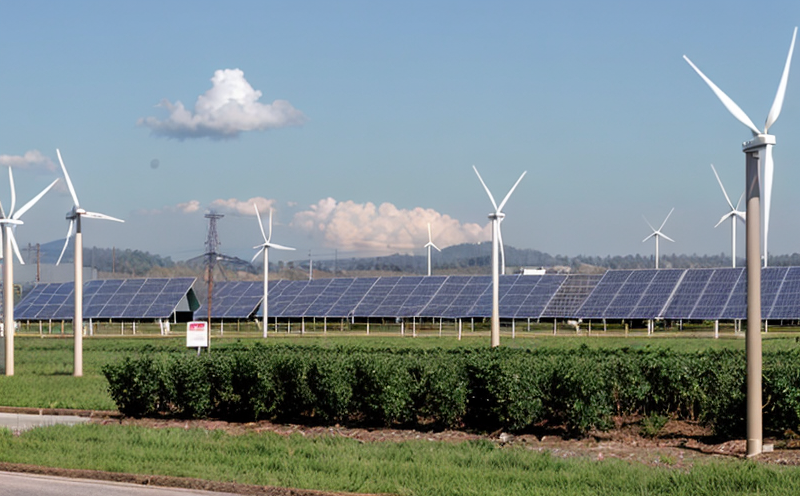IEEE 1901 Broadband over Power Line Device Testing
The IEEE P1901 working group focuses on the development of standards for broadband communication over power lines. The IEEE Standard for Broadband Communication Over Power Lines, IEEE Std 1901-2013, is a key specification that defines the physical layer (PHY) and media access control (MAC) layers for power line communications. Testing according to this standard ensures reliable transmission of data at high speeds over existing electrical infrastructure.
Utility companies are increasingly adopting broadband over power lines (BPL) technology to enhance their smart grid capabilities, providing faster internet connections directly through the home’s electrical wiring. This service covers comprehensive testing for devices that comply with IEEE 1901 standards, ensuring they meet stringent performance criteria and interoperability requirements.
The process involves rigorous validation of equipment performance under various conditions, including noise immunity, error rates, throughput capabilities, and compatibility with existing power line infrastructure. By adhering to these tests, manufacturers can guarantee their products will function reliably in real-world scenarios where electrical interference is common.
Our laboratory utilizes state-of-the-art instrumentation capable of simulating diverse environmental factors such as electromagnetic interference (EMI), voltage fluctuations, and temperature extremes. These conditions are simulated because they reflect the dynamic nature of power distribution networks worldwide. We employ cutting-edge software tools to analyze signal quality metrics like bit error rate (BER) and signal-to-noise ratio (SNR).
Testing according to IEEE 1901 standards is essential for several reasons. Firstly, it guarantees interoperability among different brands and models of devices operating on the same power lines. Secondly, compliance ensures regulatory adherence in regions with specific requirements regarding power line communications technology.
In addition to ensuring technical performance, our testing also evaluates ease-of-use features like user interface design and installation procedures. This holistic approach ensures that not only does the product work correctly but it is also practical for consumers to implement within their homes or businesses.
Our team of experts possesses extensive experience in power line communications technology, allowing us to provide tailored solutions based on individual client needs. Whether you're a manufacturer looking to validate new designs or an installer seeking assurance about compatibility between components, we offer comprehensive testing services that meet all relevant standards and guidelines.
Scope and Methodology
The scope of IEEE 1901 Broadband over Power Line Device Testing encompasses a wide range of activities aimed at ensuring compliance with the IEEE Standard for Broadband Communication Over Power Lines. This includes both laboratory-based tests conducted using controlled environments simulating actual usage conditions, as well as field trials performed under real-world circumstances.
In terms of methodology, our approach begins with initial setup and configuration of test equipment tailored to specific product characteristics. Once configured correctly, we proceed to conduct a series of performance evaluations focusing on key parameters such as data transmission rates, latency times, error correction mechanisms effectiveness, and overall reliability.
- Data Transmission Rates: Measuring the speed at which information can be transferred between devices connected via power lines.
- Latency Times: Evaluating how long it takes for a message sent from one device to reach another after being transmitted through the power line infrastructure.
- Error Correction Mechanisms Effectiveness: Assessing the ability of error correction protocols implemented in the tested devices to correct errors introduced during data transmission due to noise or other disturbances present on the power lines.
- Overall Reliability: Confirming that all components function consistently over extended periods without failures even when subjected to harsh operating conditions typical of real-world installations.
To ensure thorough evaluation, our testing protocols include repeated measurements under varying environmental factors and usage patterns. This approach helps identify potential weaknesses or areas for improvement in the tested devices before they are deployed commercially.
Benefits
- Enhanced Interoperability: Ensures that devices from different manufacturers can work together seamlessly, enhancing overall system performance within smart grid networks.
- Increased Reliability: Identifies potential weaknesses early on, allowing for necessary adjustments or improvements before the products are released into marketplaces.
- Regulatory Compliance: Helps companies avoid costly fines and penalties associated with non-compliance by ensuring strict adherence to international standards like IEEE 1901.
- Promotes Innovation: Encourages continuous improvement in technology through rigorous testing, fostering a competitive environment that drives advancements in power line communication solutions.
The benefits extend beyond just individual companies; they also contribute positively towards broader societal goals such as increased energy efficiency and reduced environmental impact by facilitating more effective use of existing infrastructure resources.
Why Choose This Test
Selecting IEEE 1901 Broadband over Power Line Device Testing is an excellent choice for several compelling reasons. It provides peace of mind knowing that your devices will perform reliably in real-world applications, thereby reducing the risk of costly failures post-deployment.
Moreover, choosing this testing service demonstrates a commitment to quality and innovation, which can significantly enhance brand reputation and customer trust. By ensuring compliance with leading industry standards like IEEE 1901, you position yourself as a leader in your field, capable of delivering cutting-edge technology solutions.
The robust nature of our laboratory facilities guarantees accurate and reliable results every time, providing valuable insights into device performance that can guide further development efforts. With ongoing support from experienced professionals who stay current with the latest trends in power line communication technology, you receive more than just a one-time testing service—you get long-term strategic guidance tailored specifically to your business needs.





